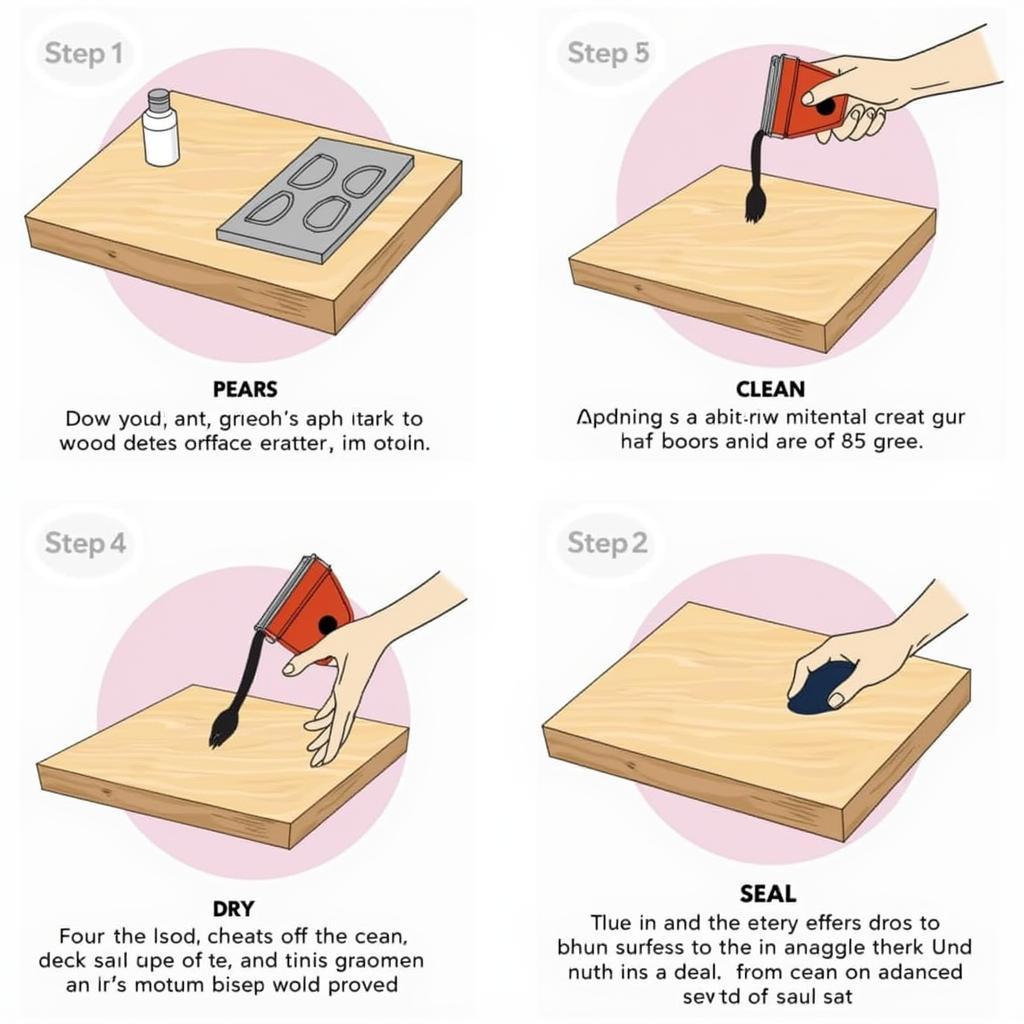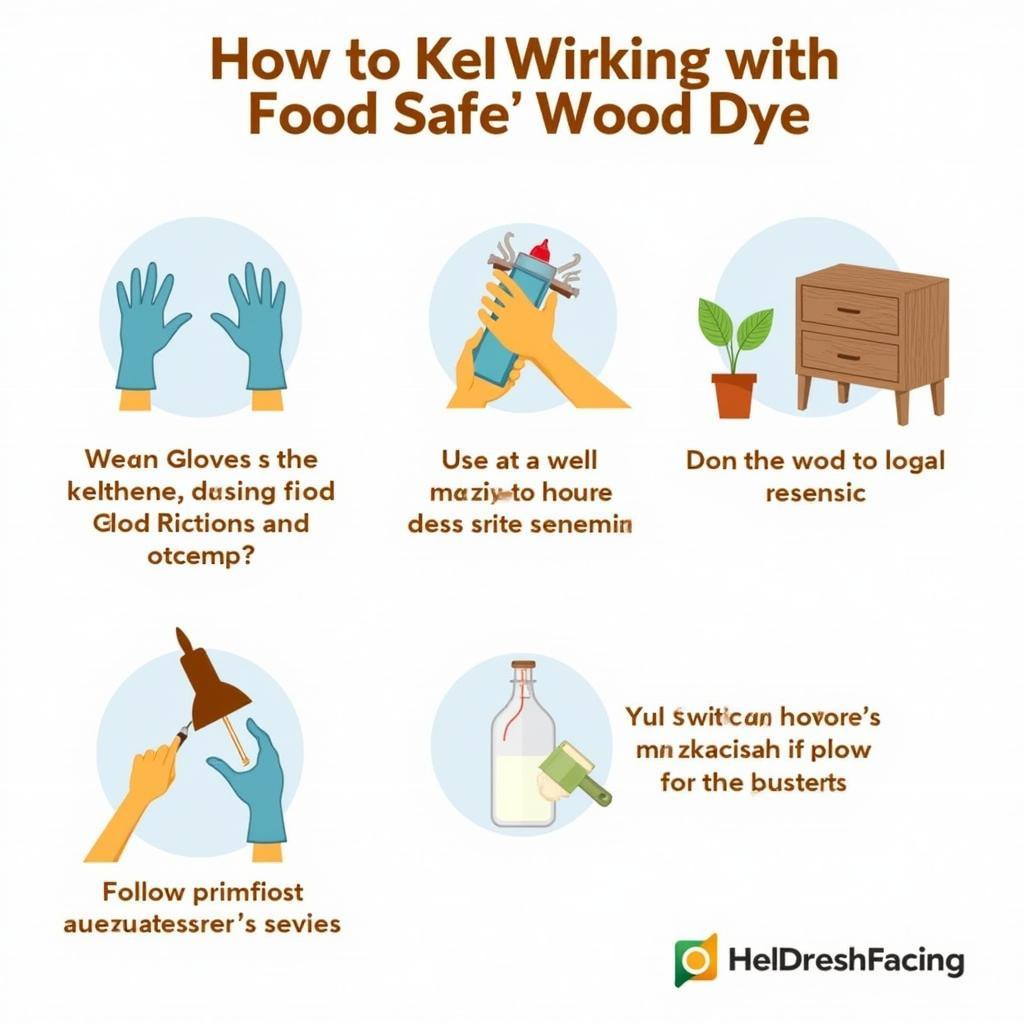Food Safe Wood Dye is a crucial consideration for anyone working with wooden kitchen utensils, serving platters, or any wooden item that comes into contact with food. Choosing the right dye ensures both the aesthetic appeal and the safety of your culinary creations. This guide explores everything you need to know about food safe wood dyes, from understanding the different types to application techniques and safety precautions.
Understanding Food Safe Wood Dyes
Not all wood dyes are created equal, and when it comes to food safety, the stakes are even higher. Food safe wood dyes are specifically formulated to prevent harmful chemicals from leaching into your food. They typically use natural pigments and avoid toxic heavy metals or other dangerous substances. This means you can enjoy the beauty of dyed wood without compromising your health.
Types of Food Safe Wood Dyes
There are several types of food safe wood dyes available, each with its own unique properties and benefits.
- Natural Dyes: Derived from plants, minerals, or insects, these dyes offer a rich history and often produce beautiful, earthy tones. Think of deep indigo from the woad plant or vibrant reds from cochineal insects.
- Water-Based Dyes: These dyes are easy to use, clean up, and are generally considered safe for food contact once properly sealed. They come in a wide range of colors and are readily available.
- Oil-Based Dyes: Known for their deep penetration and vibrant colors, oil-based dyes can enhance the natural grain of the wood. However, it’s important to choose options specifically labeled as food safe.
Choosing the right type of dye depends on your project, the type of wood you’re working with, and the desired finish.
Applying Food Safe Wood Dye
The application process for food safe wood dye can vary depending on the type of dye you choose. However, there are some general steps to follow:
- Prepare the Wood: Sand the wood thoroughly to create a smooth surface for even dye absorption.
- Clean the Surface: Remove any dust or debris with a tack cloth or damp cloth.
- Apply the Dye: Follow the manufacturer’s instructions for applying the dye. This may involve brushing, dipping, or spraying.
- Allow to Dry: Give the dye ample time to dry completely before applying any sealant.
- Seal the Wood: This is a crucial step for food safety. A food-safe sealant creates a barrier between the dye and your food.
 Steps to Apply Food Safe Wood Dye
Steps to Apply Food Safe Wood Dye
“Proper surface preparation and sealing are absolutely essential when using any dye on items that will contact food,” says Amelia Carter, a wood finishing expert with over 20 years of experience.
Is Tissue Paper Food Safe?
Safety Precautions
While food safe wood dyes are designed to be safe for food contact, it’s still important to take precautions.
- Always use dyes labeled as food safe.
- Follow the manufacturer’s instructions carefully.
- Work in a well-ventilated area.
- Wear gloves and eye protection.
- Dispose of dye and sealant properly.
 Safety Precautions for Using Food Safe Wood Dye
Safety Precautions for Using Food Safe Wood Dye
“Remember, even with food safe dyes, it’s crucial to regularly check your woodenware for any signs of wear or damage to the sealant,” advises David Miller, a renowned chef known for his handcrafted wooden serving pieces.
Conclusion
Food safe wood dye offers a beautiful and safe way to enhance your wooden kitchenware and serving pieces. By understanding the different types of dyes, proper application techniques, and necessary safety precautions, you can confidently add color and character to your culinary creations. Remember to always choose dyes explicitly labeled as food safe and prioritize proper sealing for optimal safety and longevity.
FAQ
- What is food safe wood dye?
- How do I apply food safe wood dye?
- What are the different types of food safe wood dyes?
- Is it necessary to seal wood after dyeing it?
- Where can I buy food safe wood dye?
- What are some common mistakes to avoid when using food safe wood dye?
- How do I care for wooden items dyed with food safe dye?
Common Scenarios:
- Scenario 1: You want to dye wooden spoons for your kitchen.
- Scenario 2: You are making a wooden charcuterie board as a gift.
- Scenario 3: You want to refinish a vintage wooden salad bowl.
Further Exploration:
You might also be interested in learning about wooden sticks for food or the interaction between paint and food. For specific wood types, consider researching is ebonized wood food safe. If you are looking for vibrant colors, check out food color green.
Need support? Contact us 24/7 at Phone: 02437655121, Email: minacones@gmail.com or visit us at 3PGH+8R9, ĐT70A, thôn Trung, Bắc Từ Liêm, Hà Nội, Việt Nam.